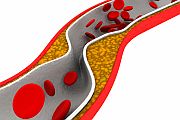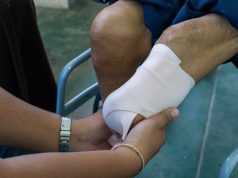Saving limbs saves lives and costs less than amputation for peripheral arterial disease
WEDNESDAY, Feb. 4, 2015 (HealthDay News) — Patients with peripheral arterial disease (PAD) who face amputation of a foot or leg can have their limb saved by minimally invasive surgery to improve blood flow, according to research presented Tuesday at the International Symposium on Endovascular Therapy, held from Jan. 31 to Feb. 4 in Hollywood, Fla.
Among the patients tested and treated in a limb salvage program, amputation rates dropped 79 percent, according to Julio Sanguily, M.D., a vascular surgeon with the Martin Health System in Stuart, Fla., who led the study. In the program, patients with PAD underwent an angiogram and, if needed, a procedure to clear out the blocked arteries and improve blood flow such as angioplasty or atherectomy, Sanguily explained. In addition, hyperbaric oxygen therapy was used.
In 2010, 24 of the 84 patients (29 percent) had amputations, and in 2011, only 12 percent of patients had amputations. In 2012, the percentage of patients who had amputations dropped to 4 percent. By 2013, it was only 2 percent, and in 2014 it was down to 1 percent, Sanguily told HealthDay.
According to Sanguily, the key to reducing amputations is first to educate doctors who treat those at highest risk — such as elderly patients and those with diabetes or kidney failure — about the improved treatments and have them refer patients to physicians who specialize in endovascular therapy. The procedure is covered by most health insurance plans, including Medicare, Sanguily added.
Copyright © 2015 HealthDay. All rights reserved.








